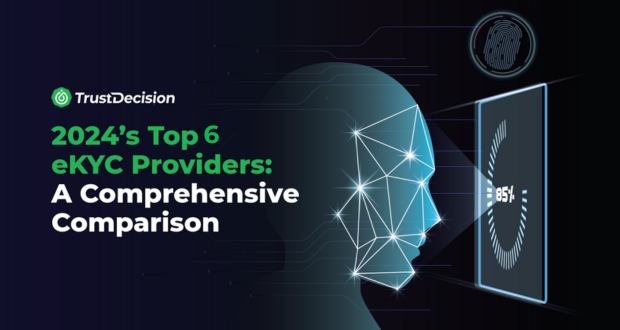Understanding Fraud Risk Management
Fraud risk management is critical to safeguarding businesses against financial losses and reputational damage. Let’s delve into the key components:
What is Fraud Risk Management?
Fraud risk management involves implementing proactive strategies to mitigate fraud threats throughout the user journey. Key focus areas include combating new account fraud and preventing account takeover fraud.
Why Managing Fraud Risk Matters
- Financial Losses: Organizations can lose up to 5% of their annual revenue due to fraud. Effective risk management minimizes these losses.
- Reputation Damage: Fraud incidents tarnish a company’s reputation, eroding customer trust and loyalty.
- Legal Implications: Non-compliance with security standards can lead to legal consequences.
While understanding and managing fraud risk is essential, it is equally important to ensure that security measures do not negatively impact the user experience. In the next section, we will explore how businesses can balance robust fraud mitigation strategies with a seamless customer experience to maintain both security and user satisfaction.
Balancing Security and User Experience
Seamless Customer Experience vs. Robust Fraud Mitigation
In the quest to protect against fraud, businesses often face the challenge of balancing robust security measures with a seamless customer experience. While stringent identity check processes and identity verification services are essential for mitigating fraud, they can sometimes create friction for users, leading to frustration and abandonment. Striking the right balance between security and user experience is crucial for maintaining customer satisfaction and trust.
Finding the Right Balance
To achieve this balance, businesses should consider the following strategies:
On one hand, stringent identity verification is vital for safeguarding against unauthorized access.
Layered Security Approach: Implement a multi-layered security framework that combines various identity verification methods, such as biometrics, document verification, and behavioral analysis. This approach ensures comprehensive protection without overwhelming the user with multiple verification steps.
Adaptive Authentication: A one-size-fits-all security measure doesn’t work anymore. In today's digital landscape, adaptive authentication offers a dynamic approach that tailors security protocols to the specific situation.
This means increased security without unnecessary friction for users. Let's delve deeper and explore the factors to consider when implementing adaptive authentication:
User Risk Profile:
- Past behavior: Analyze a user's past activity to identify patterns. Frequent logins from recognized devices indicate lower risk, while unusual access attempts raise red flags.
- Device trust: Assign trust levels to devices based on usage history. Regularly used devices from known locations can be considered more reliable.
Transaction Risk Profile:
- Financial transactions: High-value transfers or account changes warrant stronger authentication than low-value purchases.
- Data sensitivity: Accessing sensitive information might require multi-factor authentication, while routine tasks might not.
Contextual Factors:
- Location: Login attempts from unusual locations could indicate potential unauthorized access.
- Time of day: Access outside of regular hours might be considered higher risk.
User Experience:
- Balance security with convenience: A seamless authentication process is crucial. Don't overburden low-risk users with excessive verification steps.
- Transparency: Inform users why additional verification is needed and how it protects them.
By considering these factors, organizations can implement a robust adaptive authentication system that provides enhanced security without sacrificing user experience. This approach can significantly reduce the risk of fraud while ensuring a smooth and secure experience for legitimate users.
User-Centric Design: Design identity verification processes with the user in mind. Ensure that the steps are intuitive, quick, and minimally intrusive. Providing clear instructions and feedback can enhance the user experience during the verification process.
Improving Acquisition, Retention, and Loyalty Without Compromising Security
Balancing security and user experience not only helps in fraud mitigation but also plays a significant role in customer acquisition, retention, and loyalty. Here are some ways to achieve this:
Streamlined Onboarding: Simplify the onboarding process by using efficient identity verification services that quickly verify identity without compromising security. This can reduce drop-off rates and improve conversion.
Continuous Monitoring: Implement continuous monitoring and real-time fraud detection to identify and address suspicious activities promptly. This proactive approach ensures ongoing protection without disrupting the user experience.
Transparent Communication: Keep customers informed about the security measures in place and how they protect their accounts. Transparency builds trust and reassures customers that their safety is a priority.
By finding the right balance between seamless customer experience and robust fraud mitigation, businesses can enhance their security posture while fostering customer satisfaction and loyalty.
Components of a Robust Fraud Risk Management Strategy
A robust fraud risk management strategy is essential for protecting businesses from the multifaceted threats of fraud. Here are the key components that form the foundation of an effective strategy:
1. Comprehensive Identity Verification
Comprehensive identity verification is the cornerstone of any fraud risk management strategy. It involves multiple layers of checks and validations to ensure the legitimacy of users. Conducting background checks on email addresses, phone numbers, and IP addresses is crucial for identifying potential red flags. By leveraging identity verification services, businesses can cross-reference these details against known databases of fraudulent activities, thereby enhancing their ability to detect and prevent fraud.
Detecting irregular behavior, account duplication, and links to social profiles is another critical aspect of comprehensive identity verification. Advanced algorithms can monitor for unusual behavior patterns, such as rapid account creation or multiple accounts linked to the same identity, which may indicate fraudulent activity. Additionally, linking user accounts to social profiles adds an extra layer of verification, making it more difficult for fraudsters to create fake identities. To further bolster security, businesses should implement CAPTCHA and other bot-detection mechanisms to prevent automated systems from creating fake accounts. Identity check tools can filter out spam registrations, ensuring that only legitimate users gain access.
2. Continuous Multi-Factor Authentication (MFA)
Traditional Multi-Factor Authentication (MFA) strengthens security but can be inconvenient for low-risk transactions. Thus, there is a struggle between robust protection and user experience.
3DS (3D Secure) verification, explicitly designed for online payments, utilizes a risk assessment process to determine the level of authentication required for each transaction. This assessment considers cardholder details, transaction details, and device details.
3DS can trigger various authentication methods based on the generated risk score, including passwords, PINs, one-time codes, or even biometrics.
The Adaptive Advantage
This dynamic nature of 3DS verification offers a two-fold benefit:
- Enhanced Security & Improved User Experience: High-risk transactions receive stronger authentication, reducing fraud, while low-risk transactions require less friction, streamlining the checkout process.
- Reduced Costs: Fewer unnecessary authentication steps minimize costs associated with fraudulent chargebacks.
Continuous Improvement
Similar to adaptive MFA systems, 3DS utilizes machine learning to analyze trends and identify new fraud patterns. This allows for continuous updates to the risk assessment process, ensuring it remains effective against evolving threats.
By combining continuous MFA with the adaptable nature of 3DS verification, businesses can create a robust security posture that provides ongoing protection against fraud while maintaining a smooth user experience.
3. Minimizing False Positives
While robust security measures are essential, it's equally important to minimize false positives to ensure a smooth user experience. False positives in identity verification can frustrate users by denying access or delaying transactions, potentially leading to lost revenue and damaging trust in the system's reliability and security. They also increase operational costs due to the need for additional support resources to resolve issues caused by legitimate users being incorrectly flagged.
Advanced algorithms and machine learning models are crucial in accurately distinguishing between legitimate and fraudulent activities. By continuously training these models on new data, businesses can improve their accuracy and reduce the incidence of false positives.
Maintaining security while ensuring a smooth user experience requires a delicate balance. Security measures should be designed to prevent legitimate users from being wrongly flagged as fraudulent, which can lead to frustration and abandonment. Implementing user-friendly verification processes that do not disrupt the overall user experience is key to achieving this balance. By focusing on security and user convenience, businesses can protect themselves from fraud while maintaining customer satisfaction and trust.
By incorporating these components into a fraud risk management strategy, businesses can mitigate fraud risks while maintaining a positive user experience. Comprehensive identity verification, continuous MFA, and minimizing false positives are critical to safeguarding the business and its customers.
TrustDecision’s Identity Verification
TrustDecision offers cutting-edge identity verification solutions to provide businesses robust protection against fraud while ensuring a seamless user experience. Their comprehensive suite of services addresses various aspects of identity verification, making it easier for businesses to verify identity, prevent fraud, and comply with regulatory requirements.
Background Checks and Sanction Checks
One of the key features of TrustDecision's identity verification service is its ability to conduct thorough background checks and sanction checks. By verifying the legitimacy of email addresses, phone numbers, and IP addresses, TrustDecision helps businesses identify and block fraudulent accounts before they can cause harm. This proactive approach to identity checks ensures that only genuine users are granted access, significantly reducing the risk of fraud. The system cross-references these details against extensive databases of known fraudulent activities, providing an additional layer of security.
Smart Multi-Factor Authentication (MFA)
TrustDecision's Smart Multi-Factor Authentication (MFA) system offers continuous monitoring and adaptive security measures to protect against unauthorized account access. The system is designed to trigger MFA whenever abnormal behavior is detected, ensuring that suspicious activities are promptly addressed. What sets TrustDecision's MFA apart is its smarter decision engine, which continuously learns from evolving fraud patterns. This adaptive capability allows the system to avoid emerging threats, providing businesses a dynamic and responsive security solution. By integrating this advanced MFA system, businesses can significantly lower the risk of account takeovers and unauthorized access.
Efficient eKYC (Know Your Customer) Compliance
Efficient eKYC compliance is another standout feature of TrustDecision's identity verification service. The platform enables businesses to validate users with access to a wide range of global document types, ensuring comprehensive identity verification. Real-time biometric checks further enhance security by providing an additional layer of verification that is difficult to forge or manipulate. TrustDecision's eKYC solutions simplify the onboarding process, making it faster and more efficient for businesses to verify new users while meeting global compliance requirements. This streamlined approach enhances security and improves the user experience, reducing friction during the onboarding process.
By leveraging TrustDecision's advanced identity verification solutions, businesses can effectively mitigate fraud risks, ensure compliance with regulatory standards, and maintain a seamless user experience. TrustDecision's comprehensive approach to identity verification provides peace of mind, allowing businesses to focus on growth and customer satisfaction without compromising on security.
Conclusion
In an era where digital interactions are increasingly susceptible to fraud, implementing a robust fraud risk management strategy is essential for safeguarding businesses and maintaining customer trust. By focusing on comprehensive identity verification, continuous multi-factor authentication, and minimizing false positives, businesses can effectively mitigate fraud risks while ensuring a seamless user experience. TrustDecision's cutting-edge identity verification solutions offer a comprehensive approach to fraud prevention, combining advanced technologies with user-friendly processes to provide robust security and compliance. By adopting these best practices and leveraging TrustDecision's innovative services, businesses can protect themselves from fraud, enhance customer satisfaction, and build a secure foundation for future growth. Let's chat about your specific needs and explore how TrustDecision can help you achieve your security goals.









.jpeg)




